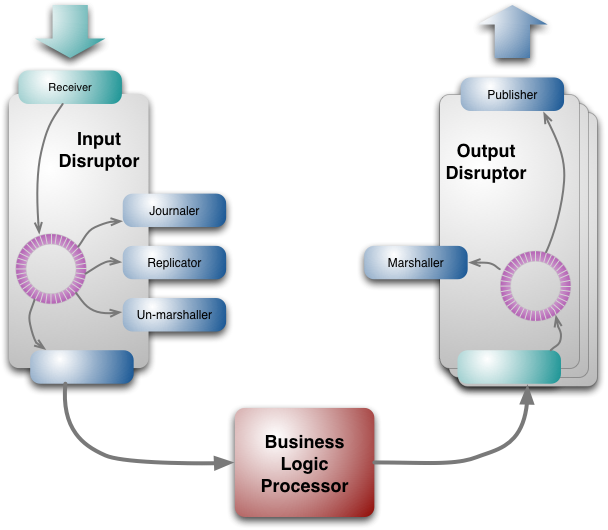tagged by: expositional architectures
An expositional architecture is an example architecture that I’ve chosen to illustrate some interesting design aspects that I think are worth using more often.
The LMAX Architecture

LMAX is a new retail financial trading platform. As a result it has to process many trades with low latency. The system is built on the JVM platform and centers on a Business Logic Processor that can handle 6 million orders per second on a single thread. The Business Logic Processor runs entirely in-memory using event sourcing. The Business Logic Processor is surrounded by Disruptors - a concurrency component that implements a network of queues that operate without needing locks. During the design process the team concluded that recent directions in high-performance concurrency models using queues are fundamentally at odds with modern CPU design.
The Architecture of Gap Inc's SCMS
SCMS PO is an application that helps Gap Inc. manage purchase orders. The architecture of the application is well liked by its development team and thus makes a good expositional architecture for a system with a rich javascript front end working with a back-end serving json. Interesting design features include using knockout.js form of the Presentation Model pattern, a javascript validator running on both client and server, encapsulating data access with repositories, using MongoDB as an application database, and the testing portfolio.
The Architecture of the Morrison's OrderPad

Morrisons OrderPad is a tablet web-application that helps staff in supermarkets place orders for new stock as they walk around the store. The resulting application makes a good expositional architecture for a tablet web application backed by a lightweight java server application. We highlight the separation of application control and DOM interaction on the client, using small, focused frameworks on the server, the broad-stack testing environment, and the use of a pilot project to understand what features were needed.
Expositional Architecture
One of the problems with growing our understanding of software systems is that we don't see enough examples. In many professional disciplines, people learn by looking at what's already been done. Examples serve as inspiration, a source of good ideas, and warnings of difficulties. For a long time it's been much harder to learn about software this way.
